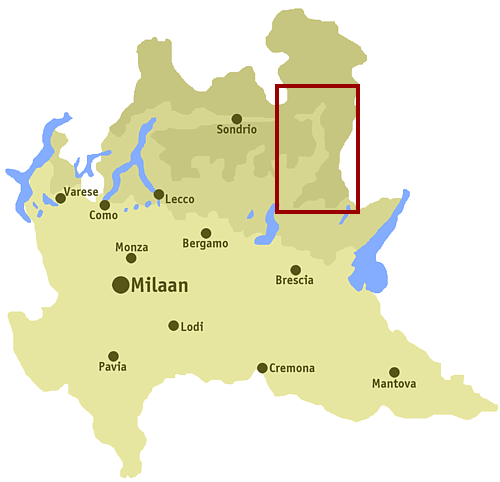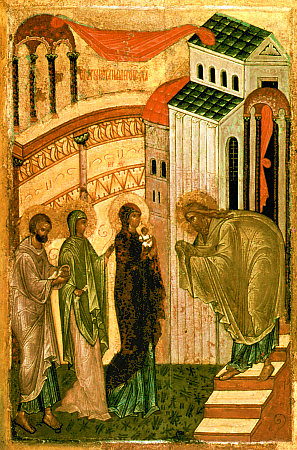|
Braone
Braone ( Camunian: or ) is an Italian comune of 672 inhabitants in Val Camonica, province of Brescia, in Lombardy. It is bounded by other communes of Breno, Cerveno, Ceto, Losine, Niardo. History In 1956 coins were discovered in Braone, the latest of which date back to Anastasius I (circa 518 CE). Main sights * Parish Church of the Purification of the Virgin Mary Mary; arc, ܡܪܝܡ, translit=Mariam; ar, مريم, translit=Maryam; grc, Μαρία, translit=María; la, Maria; cop, Ⲙⲁⲣⲓⲁ, translit=Maria was a first-century Jewish woman of Nazareth, the wife of Joseph and the mother o ..., reported already in 1439, has a stone portal Sarnico of the eighteenth century. The altarpiece is by Fiammenghino. References External links - Lombardia Beni Culturali Cities and towns in Lombardy {{Brescia-geo-stub ... [...More Info...] [...Related Items...] OR: [Wikipedia] [Google] [Baidu] |
Val Camonica
Val Camonica (also ''Valcamonica'' or Camonica Valley, Eastern Lombard: ''Al Camònega'') is one of the largest valleys of the central Alps, in eastern Lombardy, Italy. It extends about from the Tonale Pass to Corna Trentapassi, in the commune of Pisogne near Lake Iseo. It has an area of about Area of the municipalities, excluding Val di Scalve and 118,323 inhabitants.Sum of ISTAT data of communes at 31 December 2007 The River Oglio runs through its full length, rising at Ponte di Legno and flowing into Lake Iseo between Pisogne and Costa Volpino. Almost all of the valley is included in the administrative territory of the province of Brescia, except for Lovere, Rogno, Costa Volpino and the Val di Scalve, which belong to the province of Bergamo. Since 1979, the rock drawings located along the valley are a UNESCO World Heritage Site, while the entire valley became a UNESCO World Biosphere Reserve in 2018. Etymology ''Val Camonica'' is derived from the Latin ''Vallis C ... [...More Info...] [...Related Items...] OR: [Wikipedia] [Google] [Baidu] |
Province Of Brescia
The Province of Brescia ( it, provincia di Brescia; Brescian: ) is a Province in the Lombardy administrative region of northern Italy. It has a population of some 1,265,964 (as of January 2019) and its capital is the city of Brescia. With an area of 4,785 km², it is the biggest province of Lombardy. It is also the second province of the region for the number of inhabitants and fifth in Italy (first, excluding metropolitan cities). It borders the province of Sondrio to the north and north west, the province of Bergamo to the west, the province of Cremona to the south west and south, the province of Mantua to the south. On its northeastern border, Lake GardaItaly's largestis divided between Brescia and the neighboring provinces of Verona (Veneto region) and Trentino (Trentino-Alto Adige/Südtirol region). The province stretches between Lake Iseo in the west, Lake Garda in the east, the Southern Rhaetian Alps in the north and the Lombardian plains in the south. The main ... [...More Info...] [...Related Items...] OR: [Wikipedia] [Google] [Baidu] |
Purification Of The Blessed Virgin Mary
The Presentation of Jesus at the Temple (or ''in the temple'') is an early episode in the life of Jesus Christ, describing his presentation at the Temple in Jerusalem, that is celebrated by many churches 40 days after Christmas on Candlemas, or the "Feast of the Presentation of Jesus". The episode is described in chapter 2 of the Gospel of Luke in the New Testament. Within the account, "Luke's narration of the Presentation in the Temple combines the purification rite with the Jewish ceremony of the redemption of the firstborn ()." In the Eastern Orthodox Church, the Presentation of Jesus at the temple is celebrated as one of the twelve Great Feasts, and is sometimes called ''Hypapante'' (, "meeting" in Greek). The Orthodox Churches which use the Julian Calendar celebrate it on 15 February, and the Armenian Church on 14 February. In Western Christianity, the ''Feast of the Presentation of the Lord'' is also known by its earlier name as the ''Feast of the Purification of the V ... [...More Info...] [...Related Items...] OR: [Wikipedia] [Google] [Baidu] |
Camunian Dialect
Eastern Lombard is a group of closely related variants of Lombard, a Gallo-Italic dialect spoken in Lombardy, mainly in the provinces of Bergamo, Brescia and Mantua, in the area around Cremona and in parts of Trentino. Its main variants are Bergamasque and Brescian. In Italian-speaking contexts, Eastern Lombard is often generically called a "dialect", understood as to mean a dialect of Italian, while some claim it is not a dialect but a language. Eastern Lombard and Italian have only limited mutual intelligibility as is the case for many Italian dialects. Eastern Lombard does not have any official status either in Lombardy or anywhere else: the only official language in Lombardy is Italian. Classification Eastern Lombard is a Romance language of the Gallo-Italic branch, closer to Occitan, Catalan, French, etc. than to Italian, with a Celtic substratum. Geographic distribution Eastern Lombard is primarily spoken in Eastern Lombardy (Northern Italy), in the provinces of Berg ... [...More Info...] [...Related Items...] OR: [Wikipedia] [Google] [Baidu] |
Comune
The (; plural: ) is a local administrative division of Italy, roughly equivalent to a township or municipality. It is the third-level administrative division of Italy, after regions ('' regioni'') and provinces (''province''). The can also have the title of ('city'). Formed ''praeter legem'' according to the principles consolidated in medieval municipalities, the is provided for by art. 114 of the Constitution of Italy. It can be divided into ''frazioni'', which in turn may have limited power due to special elective assemblies. In the autonomous region of the Aosta Valley, a ''comune'' is officially called a ''commune'' in French. Overview The provides essential public services: registry of births and deaths, registry of deeds, and maintenance of local roads and public works. Many have a '' Polizia Comunale'' (communal police), which is responsible for public order duties. The also deal with the definition and compliance with the (general regulator plan), a document ... [...More Info...] [...Related Items...] OR: [Wikipedia] [Google] [Baidu] |
Lombardy
Lombardy ( it, Lombardia, Lombard language, Lombard: ''Lombardia'' or ''Lumbardia' '') is an administrative regions of Italy, region of Italy that covers ; it is located in the northern-central part of the country and has a population of about 10 million people, constituting more than one-sixth of Italy's population. Over a fifth of the Italian gross domestic product (GDP) is produced in the region. The Lombardy region is located between the Alps mountain range and tributaries of the Po river, and includes Milan, the largest metropolitan area in the country, and among the largest in the European Union (EU). Of the fifty-eight UNESCO World Heritage Sites in Italy, eleven are in Lombardy. Virgil, Pliny the Elder, Ambrose, Gerolamo Cardano, Caravaggio, Claudio Monteverdi, Antonio Stradivari, Cesare Beccaria, Alessandro Volta and Alessandro Manzoni; and popes Pope John XXIII, John XXIII and Pope Paul VI, Paul VI originated in the area of modern-day Lombardy region. Etymology The name ... [...More Info...] [...Related Items...] OR: [Wikipedia] [Google] [Baidu] |
Anastasius I Dicorus
Anastasius I Dicorus ( grc-gre, Ἀναστάσιος, Anastásios; – 9 July 518) was List of Byzantine emperors, Eastern Roman emperor from 491 to 518. A career civil servant, he came to the throne at the age of 61 after being chosen by the wife of his predecessor, Zeno (emperor), Zeno. His reign was characterised by reforms and improvements in the government, finances, economy, and bureaucracy of the Empire. He is noted for leaving the empire with a stable government, reinvigorated monetary economy and a sizeable budget surplus, which allowed the Empire to pursue more ambitious policies under his successors, most notably Justinian I. Since many of Anastasius' reforms proved long-lasting, his influence over the Empire endured for many centuries. Anastasius was a Miaphysite and his personal religious tendencies caused tensions throughout his reign in the Empire which was becoming increasingly divided along religious lines. He is venerated as a saint by the Syriac Orthodox ... [...More Info...] [...Related Items...] OR: [Wikipedia] [Google] [Baidu] |
Chiesa Della Purificazione Di Maria - Braone (Foto Luca Giarelli)
Chiesa (Italian, 'church') may refer to: People with the surname *Andrea Chiesa (born 1966), Swiss Formula One racer *Anthony della Chiesa (1394–1459), Italian Dominican friar *Bruno della Chiesa (born 1962), European linguist * Carlo Alberto Dalla Chiesa (1920-1982), Italian military leader *Deborah Chiesa (born 1996), Italian tennis player *Enrico Chiesa (born 1970), Italian footballer **Federico Chiesa (born 1997), Italian footballer, son of Enrico Chiesa *Giacomo della Chiesa (1854-1922), Italian bishop, became Pope Benedict XV *Giulietto Chiesa (1940-2020), Italian journalist and politician *Giulio Chiesa (1928-2010), Italian pole vaulter *Gordon Chiesa, American basketball coach *Guido Chiesa (born 1959), Italian director and screenwriter *Jeffrey S. Chiesa (born 1965), U.S. Senator; American lawyer; former Attorney General of New Jersey *Laura Chiesa (born 1971), Italian fencer *Mario Chiesa (politician) (born c1938), Italian politician *Michael Chiesa (born 1987), America ... [...More Info...] [...Related Items...] OR: [Wikipedia] [Google] [Baidu] |
Virgin Mary
Mary; arc, ܡܪܝܡ, translit=Mariam; ar, مريم, translit=Maryam; grc, Μαρία, translit=María; la, Maria; cop, Ⲙⲁⲣⲓⲁ, translit=Maria was a first-century Jewish woman of Nazareth, the wife of Joseph and the mother of Jesus. She is a central figure of Christianity, venerated under various titles such as virgin or queen, many of them mentioned in the Litany of Loreto. The Eastern and Oriental Orthodox, Church of the East, Catholic, Anglican, and Lutheran churches believe that Mary, as mother of Jesus, is the Mother of God. Other Protestant views on Mary vary, with some holding her to have considerably lesser status. The New Testament of the Bible provides the earliest documented references to Mary by name, mainly in the canonical Gospels. She is described as a young virgin who was chosen by God to conceive Jesus through the Holy Spirit. After giving birth to Jesus in Bethlehem, she raised him in the city of Nazareth in Galilee, and was in Jerusal ... [...More Info...] [...Related Items...] OR: [Wikipedia] [Google] [Baidu] |
.jpg)



